Sunday E-dition: Sipping Through the Var's Rosé Region
By Georgeanne Brennan, Introduction by Sasha Paulsen
Napa Valley Features Welcomes Georgeanne Brennan
Introduction by Sasha Paulsen
NAPA VALLEY, Calif. — It is with the greatest delight that I am writing this to introduce a new contributor to Napa Valley Features — although as a James Beard-award-winning cookbook author and food, wine and travel writer, Georgeanne Brennan needs little introduction.
I met Georgeanne when I was features editor at the Napa Valley Register and her newest book, “The Green Eggs and Ham Cookbook,” inspired by her grandchildren, arrived on my desk.
Georgeanne, I learned, divided her time between her house in Provence and her farm in Winters, and while I would happily have gone to France to interview her, the drive to Winters was a bit closer for the purpose.
And so I met a wonderful woman, brimming with ideas, a matchless cook, a conversationalist in the best French tradition and possessor of 1,001 untold tales. I almost fell off my chair when she offered to write occasional stories for the Register.
Since then I have made many journeys to Winters. We have a ritual: I go to the Fatted Calf in Napa to pick up sandwiches. “For Georgeanne Brennan?” owner Taylor Boetticher asks. “One of my favorite people in the world!”
In Winters, we sit under an ancient walnut tree — a magical tree, even on the hottest Winters day — and it is entirely pleasant beneath its branches. We drink wine, usually rosé, and we discuss our mutual loves: France. Writing. Life.
In addition to her manifold talents, Georgeanne possesses a gift of generosity that I have come to value. When I published my first novel, she introduced me to the people at Book Passage in Corte Madera and so secured for me an appearance at this highly selective and much sought-after venue for authors. She interviewed me at the event, and I know it was her name on the billing that brought people to meet this unknown Napa novelist. When I published my second novel, she did it again. These are the kinds of things a venerated author can do for a new one that can make all the difference. It did.
I have come to believe that the way to age with grace is to meet it with zest and enthusiasm and never stop coming up with new ideas. And every time we sit under the walnut tree, she is coming up with something new. Once she asked me if I had any spare fig leaves. For what? She and two Winters friends (Corinne Martinez, owner of Berryessa Gap Winery, and Nicole Salengo, the winemaker) were going to make French farmhouse style apéritif wines with a Winters twist, infusing, for example, sauvignon blanc with Meyer lemon, dry rosé with Blenheim apricot and zinfandel with black fig. The next time I went to Winters, I brought a box of fig leaves with the sandwiches. The wines have won awards, like their creators, and the trio has since opened a tasting room and lounge in downtown Winters, L’Apéro les Trois — part France, part Winters and entirely charming.
Georgeanne, a tireless traveler and adventurer, is always off to somewhere, and very often this is France. When we were last under the walnut tree in July, she had just returned from a journey through the Var region, exploring their world of rosé. (If you have noticed a recurring reference to rosé, did I mention that it is her favorite wine? Well, one of them anyway.)
“I am writing up a story about this,” she said. “I wish I could send it to you to publish, like in the old days.”
“I have an idea,” I said.
So here is Georgeanne Brennan sharing a story with you. It’s highly recommended you read it while sipping a glass of rosé.
Following the Rosé Road – The Var
By Georgeanne Brennan
VAR, France — In the 1970s my husband and I, with a friend, bought a farmhouse in the upper Var, deep in rural Provence. The dirt road to our place was rutted from tractors traveling along it to reach the vineyards and fields of wheat and barley surrounding us. The grapes went to the local cooperative, where they were turned into either red or rosé wine — not much rosé because real men didn’t drink rosé in those days. Some of the wine was bottled, but most of it was sold in bulk, right out of the tanks, hosed into wicker-wrapped glass demijohns to be bottled later at home.
That was another world. In recent years, rosé wine has exploded in global popularity, and the Department of the Var, in the heart of Provence, is the world’s largest producer of AOP rosé wines (Appellation d’Origin Protégée). It encompasses three major appellations and a small piece of another, Coteaux d’Aix-en-Provence.
Napa Valley now produces numerous excellent rosé wines, using the varietals that thrive here, such as pinot noir, a grape rarely grown in Provence but which is used to make the Sancerre rosés of the Loire Valley. Pinot noir is the grape of choice for Robert Mondavi and Trefethen’s limited production S.I.N rosés, for example. Cabernet sauvignon, which Conn Creek uses for its rosé, blending it with merlot as in Bordeaux, is another example of Napa rosé. Cabernet sauvignon is grown in the Var as well; however, the dominant varieties there are mourvèdre, grenache, syrah and cinsault, with lesser-used tibouren, carignan and vermentino.
The Var’s incredibly diverse terrain, from the restanques of Bandol, where vineyards of stone terraces overlook the Mediterranean Sea, to the rolling plains and perched villages of the central and upper Var, where hundreds of vineyards have been carved out of the thick forests, offers wine lovers an inimitable trip through the heart of Provence’s rosé wines.
Using my place in the upper Var as a starting point, I went with a friend on a rosé exploring trip this spring, visiting the Maison des Vins in each of the large appellations, as well as a few wineries and restaurants, beginning in Bandol.
Bandol
Bandol is one of the oldest grape-growing regions in France. Grapevines were planted in and around Bandol 2,600 years ago by Phoenicians, and viticulture was further developed by the Romans who followed. When the vines were devastated by phylloxera in the late 19th century, vintners regrouped and planted mourvèdre grapes, which are the backbone of today’s Bandol reds and rosés. In 1941, Bandol was granted the AOP designation, one of the first in France to achieve it. Today, all red and rosé AOP wines must include a minimum of 50% mourvèdre, and some are 100% mourvèdre.
The Oenothèque des Vins de Bandol (Maison des Vins), where the wines of this appellation are promoted and sold, is located in the heart of the town of Bandol, just a short walk from the Mediterranean. A visit and tasting here is a good way to take in the breadth and scope of the region’s wines – the rosés, reds and the relatively rare and esoteric whites.
From here it was just a brief drive along the coast to Saint-Cyr-sur-Mer, part of the Bandol appellation. It was a rainy, windy day, which made the town’s long stretch of curving beach and surfer-dotted waves even more dramatic. We scurried along the esplanade (created when the German fortifications of World War II were torn down) to the Graine de Sable, a glass-walled seaside restaurant poised above the sand and rocks. Seafood is the specialty, and I couldn’t resist the Plat du Jour - Choucroute Garnie with shellfish and fish. My dish arrived, gloriously crowned with a plump langoustine that was surrounded by three different fish fillets sprinkled with mussels and just enough potatoes to balance the flavors. The wine? A Bandol rosé from Saint-Cyr-sur-Mer’s Domaine de Cagueloup, 70% mourvèdre, 30% grenache. It was the perfect pairing for the dish.
Domaine de Frégate
After a rather hurried visit through the old town of Saint-Cyr-sur-Mer — the rain was increasing — we left for the short drive up to the commanding Domaine de Frégate, where the vineyards, which stretch almost to the Mediterranean, benefit from the sea breezes. Owned by the same family since 1882, Frégate now produces 60,000 bottles of wine a year in their modern facility with a cheery tasting room where we sampled the wines. Their rosé, a rosy-salmon hue, is a blend of mourvèdre, grenache and cinsault, and it was suggested that we enjoy it with grilled fish or meat or as an apéritif with Provencal specialties. After a tour of the vineyards, winery and much sampling in the tasting room, we were off to the neighboring Frégate Provence Resort.
We could literally smell the salt in the air when we opened the windows of our room to the view of vineyards and sea. It was difficult to leave the view for dinner at the downstairs restaurant, but we were compensated for the loss with a dinner of grilled fish and a bottle of Domaine de Frégate rosé, this one 50% mourvèdre, 25% grenache and 25% cinsault.
Coteaux Varois en Provence
This appellation is a landlocked crescent of 2,500 hectares in the western portion of the Var, with its center near Brignoles, the ancient summer residence of the Counts of Provence. Brad Pitt’s Château Miraval, George and Amal Clooney’s Domaine du Canadel and George Lucas’ Château Margui are all within the Coteaux Varois en Provence.
The appellation produces an abundance of rosé wines, using primarily cinsault, mourvèdre, grenache and syrah, which are also the source for the smaller production of red wines. The dominant white varieties are rolle (aka vermentino), ugni blanc, grenache blanc and sémillon.
I started in the quiet, leafy village of La Celle, not far from Brignoles, with a visit to the Maison des Vins de Coteaux Varois located there. Shelves of rosé wine from throughout the appellation are on display and for sale, along with the smaller production of whites and reds. Here we tasted several rosé and white wines before going to lunch just down the street at Alain Ducasse’s L’Abbaye de la Hostellerie de la Celle, the rustically elegant restaurant and inn next to the 13th-century abbey.
The menu features local produce, some from the restaurant’s own vegetable and herb garden, fish and shellfish from the nearby Mediterranean and regional products. There is a strong focus too on the local wines.
Part of the magic of the restaurant is the seating, either on the shaded terrace of the large interior court garden, replete with cherry trees, or in the solarium, looking onto the garden, which was where we were seated on our sunny but chilly day.
Once the wine was ordered, the menu selected and our apéritif of local Château des Annibals rosé — “suivez moi jeune homme” (I love the name) — was brought to the table, the surprise treats began to appear. Small dishes of rabbit rillettes, black olive tapenade, different breads and anchoiade were followed by sea urchin shells filled to the brim with foamy mousse covering briny bites of bright orange urchin. Our server recommended white wine with our meal, which began with a fresh anchovy tart, followed by sea bass with homemade gnocchi and tiny fava beans. The recommended wine, from Château Bellini near Brignoles, was an aromatic blend of rolle, sémillon and grenache blanc.
Côte de Provence
With nearly 20,000 hectares of grapes, this appellation is by far the largest of the four appellations in the Var. It stretches from the Mediterranean from Toulon, well past Saint Tropez, and continues north almost to the Grand Canyon du Verdon in the Alpes d’Haute Provence. The soil, weather and landscape express all the variations within the Var itself. The Maison des Vins de Côte de Provence is located just north of the middle of the appellation in a region known as the Dracenie, in the ancient town of Les-Arcs-sur-Argens. As befitting the size of the appellation, this Maison de Vins is larger than the others in the Var, boasting cooking and wine-blending classes as well as daily tastings of 16 different wines. Rosé wine accounts for 80% of the production in the appellation, and the primary grapes are grenache, syrah, mourvèdre, cabernet sauvignon, carignan and tibouren. With the exception of tibouren, these are also used to make the smaller production of reds. For the whites, the main grapes are rolle, ugni blanc, sémillon and clairette. It was hard to choose which of the 16 wines on offer to taste. Tasting all 16 was far beyond my capacity!
Domaine de Gavoty
My outing to visit wineries of the Côte de Provence began on a narrow winding road that took us through a forest and then to the small village of Cabasse, in the heart of Provence. From there an even narrower road took us to Domaine Gavoty, which sits along the Roman road, Via Aurelia. Wine has been made here for more than a thousand years, and the Domaine has been in the current family for more than two centuries. As our car pulled onto the property, the brilliant Provençal sun lit the vineyards, fringed with red poppies, and framed the winemaker and owner, Roselyn Gavoty, in a glowing, almost surreal light. The buildings are stone and wood, rustic and welcoming, and the organic wines, made with cinsault, grenache, syrah and rolle, are fiercely Provençal, begging to be on a table laden with the food of Provence. I was here to officially explore rosés – and I tasted several, including the exceptional Clarendon rosé of 70% grenache and 30% cinsault, but I couldn’t resist the rare opportunity to engage in a vertical tasting of their highly awarded 100% rolle wines, spanning 10 vintages.
Commanderie de Peyrassol
From Domain Gavoty it was only a 15-minute drive to the winery of Commanderie de Peyrassol. Were it not for the commonality of wine and a shared ancient history, Peyrassol could be in a parallel universe.
Peyrassol’s vast architectural gem of a tasting room is resplendent with walls of backlit wine bottles towering over central swirls of tasting stations that are dotted with contemporary art. Evidence of the owner’s collection and fascination with contemporary art is everywhere: installations in the vineyards, in the property’s forest, throughout the winery and its formal gardens, as well as in a climate-controlled gallery and the two restaurants on the property.
You couldn’t ask for a more casual, authentic setting for lunch and wine than the winery’s Bistrot de Lou. Tables are scattered throughout a courtyard framed by historic stone buildings and shaded by mulberry trees. The grilled fish, meat and salads of the day are prepared in sight of the tables. Order from the chalkboard, and soon your table is laden with simple, delicious Provençal food and the wine of Peyrassol. I opted for the Château Peyrassol rosé, an unusual blend of cinsault, grenache, syrah, mourvèdre, tibouren and vermentino that I had sampled in the tasting room. It was a perfect accompaniment to my grilled fish, and it went well with the fresh strawberry dessert, too.
The day finished turning back toward Les Arcs-sur-Argens and Château d’Argens Hotel, towering over the medieval streets of the old city, where we were ensconced in a comfortable tower room. Dinner was served in the chateau’s ancient wine cave, and it was a fine menu of local food and Côte de Provence wines. I chose a deconstructed pot-au-feu salad, followed by braised lamb, all accompanied by a rosé from Château Sainte Roseline, where we had a visit scheduled the next morning.
Château Sainte Roseline
Set in a parklike setting framed by ancient sycamore trees and surrounded by 110 hectares of organic vineyards, Château Sainte Roseline with its chapel and cloister is home to 11 different grape varieties, including cinsault, mourvèdre, syrah, grenache, rolle and sémillon. It was still morning when we arrived, and we were among the first of the day to sample wines in the tasting room. I began with the singular Lampe de Meduse rosé, palest pink, in the iconic bottle with a rounded base rising to a slender neck, and continued with La Chapelle Sainte Roseline, a limited-production wine made with mourvèdre, grenache and rolle, before taking the path to the chapel itself. Located on the estate is the remarkable 11th-century Romanesque chapel where the body of Sainte Roseline has lain since the 14th century. Restored in the 20th century, the intimate space includes a mosaic mural created by Marc Chagall, as well as contemporary stained-glass windows. I found the setting and the chapel both peaceful and moving and perfectly in harmony with the vineyards and wines.
Château de Saint-Martin
In the same family for 11 generations, Château de Saint-Martin remains a hands-on family affair. It was originally built as part of a dowry for the daughter of a marquis and has been passed down through the women of the family to today’s owner, Adeline de Barry.
A welcoming stop along the wine road, the property encompasses 100 hectares, of which 50 hectares are vines, and includes the ruins of a large Gallo-Roman villa and a vast, still-functioning stone cellar built by monks more than 700 years ago. The tasting room, set inside a rose-covered building, offers samples of tapenade and spreads along with the range of wines. An unusual rosé, Eternelle Favorite, a pale salmon hue, is made with a majority of tibouren, an old Provencal variety, while the Grande Reserve Cuvee, colored a pale peach, is made from a blend of grenache, cinsault, tibouren, syrah and carignan. If you are feeling peckish, which I was, a picnic-style lunch of charcuterie, cheeses, quiche and dessert is available to purchase and eat in the garden or community room. If a museum of the history of Provencal liquors appeals to you, the Liquoristerie de Provence, overseen and developed by Renaud de Barry, the husband of Adeline, is an interactive tour de force, culminating with a visit to the distillery itself, which produces five different types of products from absinthe to liquors. Last but not least, there are also several period rooms in the main house, home of the owners, for overnight stays.
The Department of the Var may not be as well-known as its neighbor to the west, the Bouche du Rhone, home to the great wines of the Rhône Valley, or its neighbor to the east, the Alpes-Maritime with Cannes and Nice. But the Var, in the heart of Provence, merits acclaim for its wines (especially the rosés), the huge diversity in its landscape, its rich history and, of course, its food.
If today’s story captured your interest, explore these related articles:
Sunday E-dition: End-of-Life Planning for Peace in Challenging Times
Sunday E-dition: Retired Judge Brings Real Napa Valley Crimes to Life
Sunday E-dition: WineaPAWlooza Raises $1.1 Million for Animals
Disasters Impact Pets: Jameson Humane to Host WineaPAWlooza Fundraiser
Levity Corner
Caption contest: Pick your favorite caption or add your own in the comments below.
Possible captions:
"I'm not picky, just discerning."
"Mere mortals wouldn't understand."
"My hobbies include napping, judging and savoring fine wine."
"I'm not high maintenance; I just have standards."
"I'm just here for the paw-some food and drink."
Last week’s winner
In "Sunday E-dition: Can We Be ‘Too Political’?,” the winning caption was "If anyone brings up politics, the turkey blows the whistle,” with 40% of the votes.
Last Week
The 2024 Napa Valley harvest began on Aug. 5, with winemakers bringing in chardonnay and pinot noir for sparkling-wine production. Despite intense heat waves, wineries such as Round Pond Estate and PEJU carefully timed the harvest to ensure ideal acidity and sugar balance in the grapes. Winemakers, including Tamra Lotz from Mumm Napa and Steve Matthiasson of Matthiasson Winery, emphasized the importance of preserving acidity for sparkling and white wines, while Pauline Lhote from Chandon noted the benefits of cold nights during harvest. The start of this year’s harvest is considered average, with winemakers such as Ashley Egelhoff of Honig Vineyard & Winery and Robert Mondavi Winery planning their picks in mid to late August.
Glenda Winders reflected on the importance of discussing politics and the impact of government on daily life in her article, "Can We Be 'Too Political'?" She recounted how her high school government teacher, Renos Spangler, inspired her lifelong engagement with political issues and civic duty. Winders shared her experiences of attending political conventions and emphasized the significance of voting, criticizing the apathy some people have toward participating in elections. Despite increased voter turnout in recent elections, Winders urged readers to engage more deeply in political discussions, highlighting the vital role these conversations play in shaping society.
Tim Carl explored the multifaceted impacts of climate change on Napa Valley in his article "Under the Hood: Climate Change's Growing Impact on Napa Valley," emphasizing the region's challenges beyond viticulture. While grapevines are notably resilient, the increasing frequency of wildfires, rising temperatures, and water scarcity pose significant threats to the community and environment. These climate changes endanger the area's biodiversity and outdoor lifestyle, impacting both tourism and local livelihoods. The hospitality and agricultural sectors are adapting with innovative solutions like automation and new farming techniques. Still, the ongoing environmental shifts require broader societal and economic adjustments to maintain Napa Valley's vibrancy and sustainability.
Tom Hixson highlighted the historical and contemporary significance of gardens, emphasizing how they have evolved from symbols of power to sources of education and beauty. The article, "Local Gardens — Celebrating Beauty and Education," explored prominent gardens such as Ruth Bancroft Garden in Walnut Creek, known for its succulents and drought-resistant plants, and the UC Davis Arboretum, which offers sustainable horticulture lessons through its diverse plant collections. Hixson also described the Las Flores Learning Garden in Napa, where UC Master Gardeners develop themed gardens and host educational workshops on topics such as lawn alternatives and seasonal vegetable growth.
In his article, "Less Is More," Dan Berger critiqued the wine industry's obsession with high scores, arguing that a great wine's quality cannot be solely determined by points. Berger emphasized the importance of balance, subtlety and complexity, noting that true excellence in wine often reflects the careful cultivation of the soil and grapes. He highlighted the often-overlooked role of growers and winemakers who prioritize working closely with nature, advocating for a philosophy of "less is more" to achieve a harmonious and nuanced final product. Berger concluded that a deep understanding of a wine's origins and characteristics is more rewarding than relying on numerical scores.
Sasha Paulsen reported on the upcoming New Music Decanted festival, scheduled for Aug. 16-18 at the Napa Valley College Performing Arts Center, which will showcase the works of Finnish composer Kaija Saariaho. Organized by Eric Moore, the festival will present 42 of Saariaho’s compositions performed by 24 artists, including the Friction Quartet and cellist Natalie Raney. Moore explained that New Music involves classical compositions that push traditional boundaries, often featuring innovative techniques and sounds. The festival will also include lectures and artist meet-and-greets, providing a comprehensive introduction to Saariaho's work and contemporary classical music.
Next Week
Next week we have more interesting articles from a host of Napa Valley Features contributors. The Master Gardener series on Wednesday will provide gardening insights, while Dan Berger will focus on wine topics on Thursday. We’ll hear from new contributors, too. Carl will explore the volatile stock market. Plus, much more.


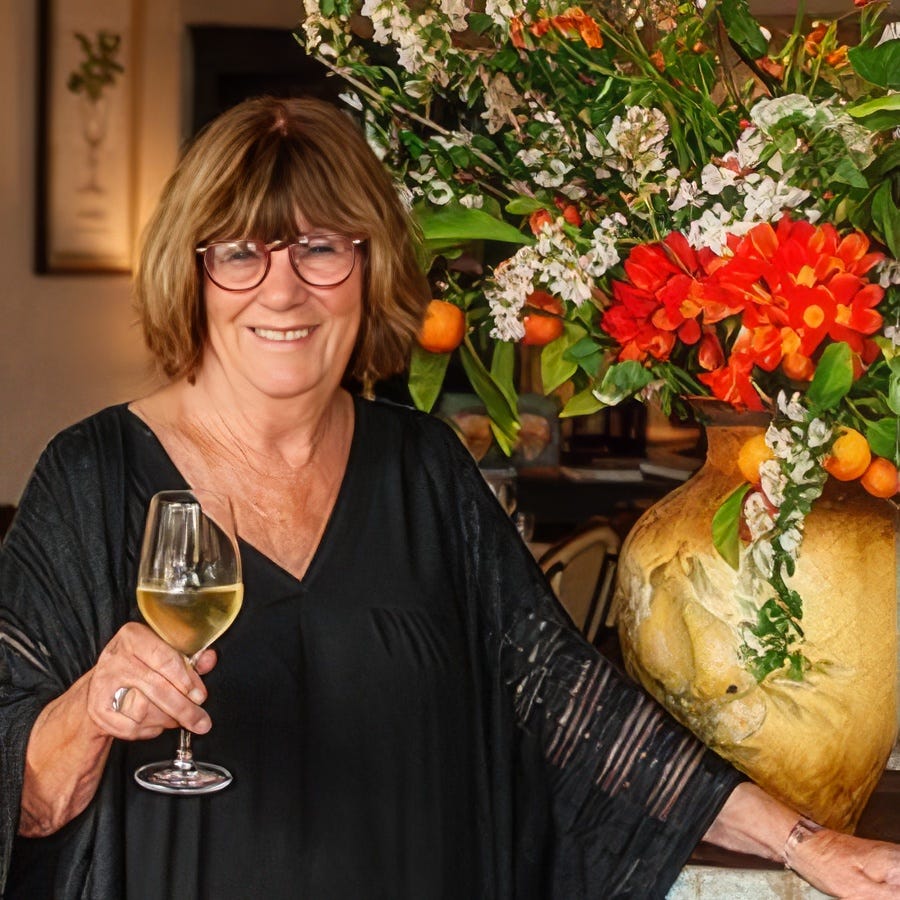

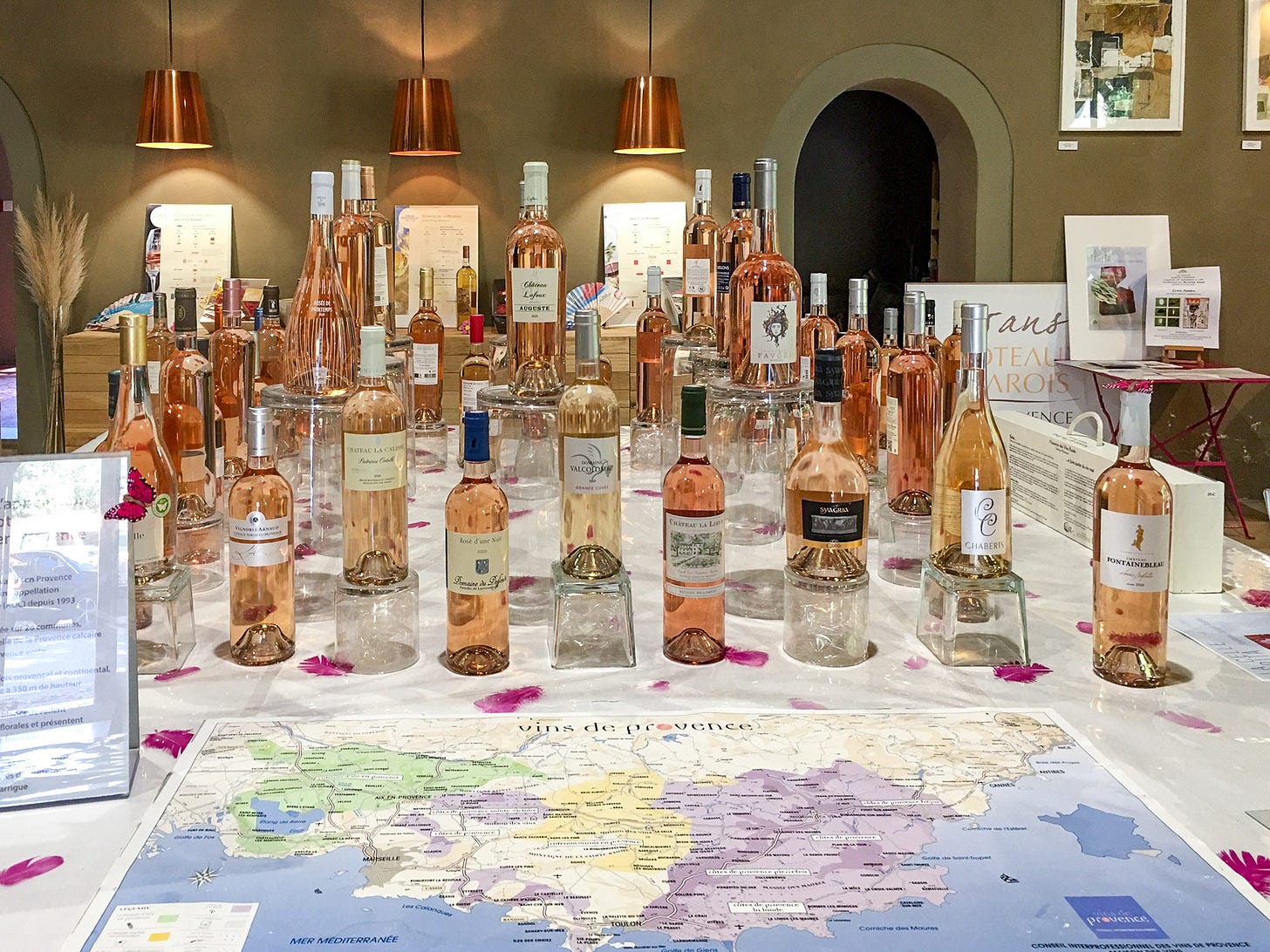
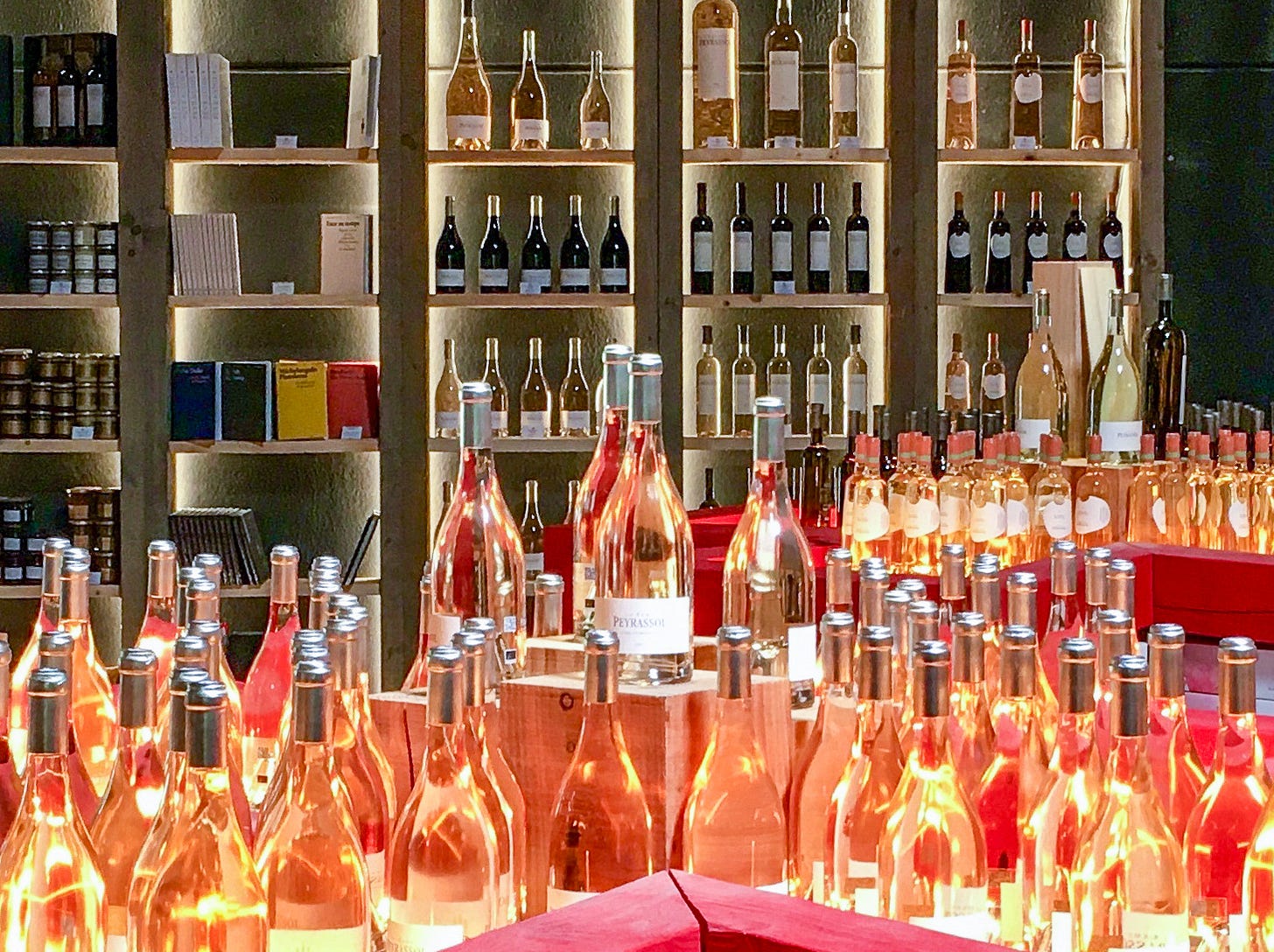

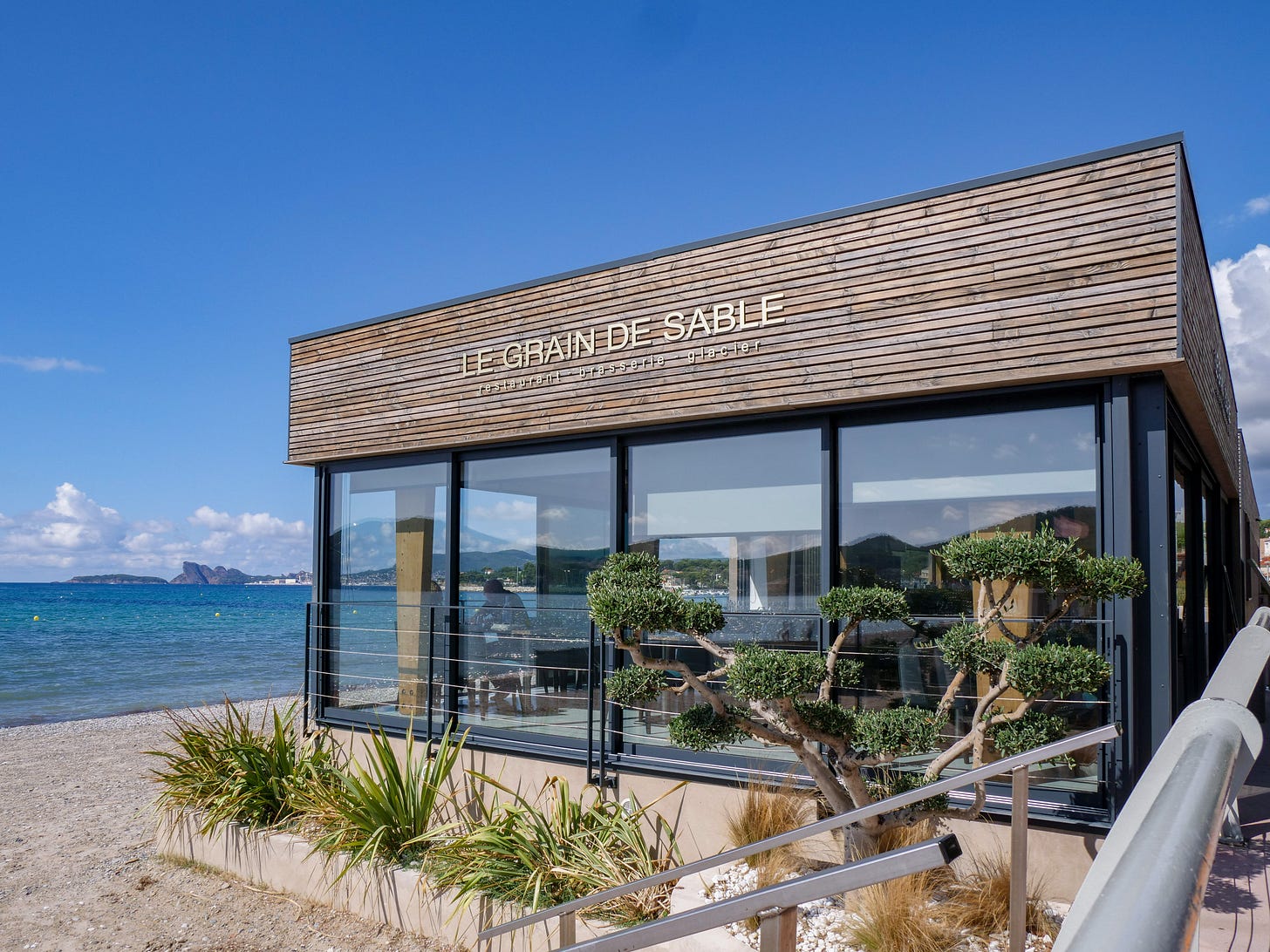
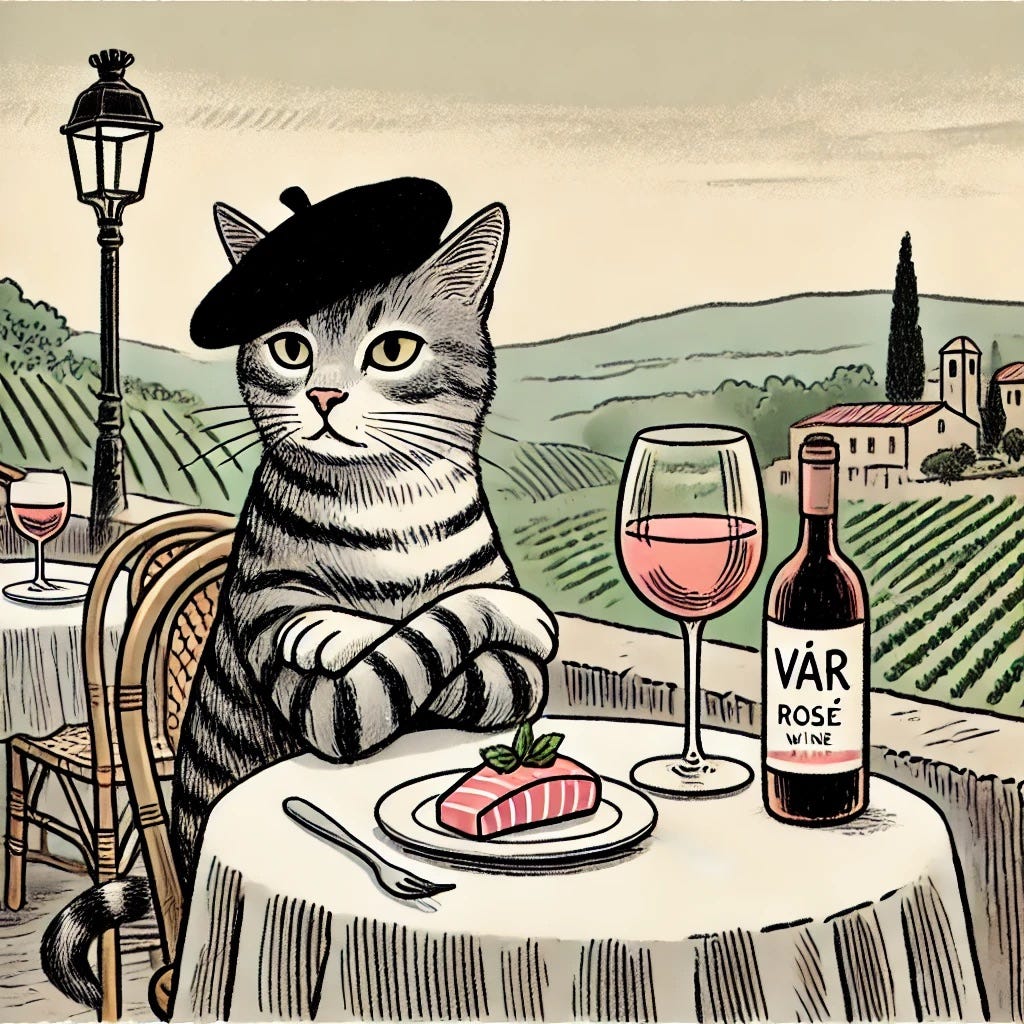


I have a well worn copy of Georgeanne Brennan’s cookbook Gather - menus for entertaining throughout the seasons, and would love to see pieces similar to that too!
Great story - I sincerely enjoyed this travelogue through the Var. With a little imagination I could smell the sea, taste the anchovies & tapenade without leaving my chair😋 Thanks for this very informative piece about these wonderful roses. Let’s see more like this.